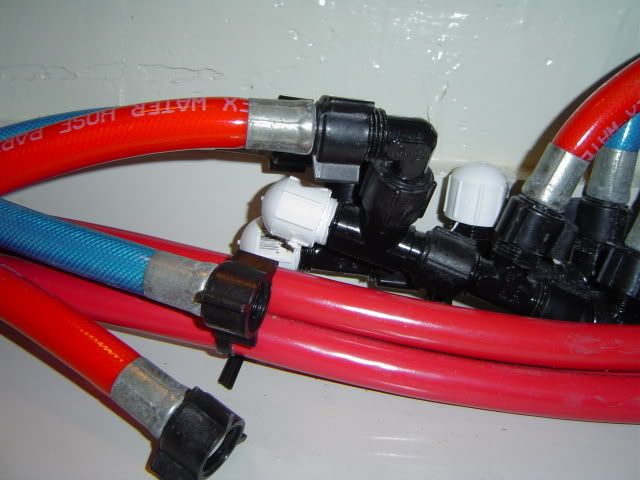First of all I want to emphasize that each boat's freshwater system is a bit different so what works for me may not work for you or your boat. But if you have a cruiser that is in a wet slip and you are a winter boater and have a bilge heater and a cabin heater, it is real nice to be able to use your freshwater sytem (and your head :grin: ) and still keep everything protected from freezing. Here in our area we are generally below freezing at night (it was 19 last night) but above freezing in the daytime but we occasionally have days where the temperature remains below freezing all day long. Our lake water will drop into the 40's during the coldest part of winter.
On our 260DA, the freshwater tank, the hot water heater, the holding tank for the head, and the water pump are in the bilge. So a bilge heater will keep them from freezing. But there are freshwater lines that run up to the transom and into the cockpit. There are no real good ways to keep these lines and faucets from freezing unless they are drained. In the 2005 and up 260DA's, Sea Ray started to use flexible lines with screw on fittings for the freshwater system. All of the connections to the water pump are right in the bilge so it's easy to get to these fittings. In the 260DA, there are three lines that need to be disconnected and drained. These three lines feed the hot/cold transom shower, the faucet that is in the Lazarette (as well as the dockside hose connection) and the faucet in the cockpit sink. All you need to do to drain those lines is to first turn off your water pump and then open the faucets to relieve any built up water pressure. Next unscrew the fittngs in the bilge, let them drain, and then cap the male ends. I bought three knurled plastic caps at Home Depot and some teflon tape to do this job. Wrap the pipes with teflon tape and then simply screw on the caps by hand. Turn the pump back on and check for leaks at the caps..........It's that simple. Here is a picture of the caps attached to the "manifold" plumbing.

When we leave the boat at the end of the day, we also leave the doors open under the sink in the galley and the head so heat circulates better to the plumbing in there. Like wise we turn off the freshwater pump and open the faucets in the cabin to relieve all water pressure. In addition, I prop open the door to my head because there is no heating duct in there.
On our 260DA, the freshwater tank, the hot water heater, the holding tank for the head, and the water pump are in the bilge. So a bilge heater will keep them from freezing. But there are freshwater lines that run up to the transom and into the cockpit. There are no real good ways to keep these lines and faucets from freezing unless they are drained. In the 2005 and up 260DA's, Sea Ray started to use flexible lines with screw on fittings for the freshwater system. All of the connections to the water pump are right in the bilge so it's easy to get to these fittings. In the 260DA, there are three lines that need to be disconnected and drained. These three lines feed the hot/cold transom shower, the faucet that is in the Lazarette (as well as the dockside hose connection) and the faucet in the cockpit sink. All you need to do to drain those lines is to first turn off your water pump and then open the faucets to relieve any built up water pressure. Next unscrew the fittngs in the bilge, let them drain, and then cap the male ends. I bought three knurled plastic caps at Home Depot and some teflon tape to do this job. Wrap the pipes with teflon tape and then simply screw on the caps by hand. Turn the pump back on and check for leaks at the caps..........It's that simple. Here is a picture of the caps attached to the "manifold" plumbing.

When we leave the boat at the end of the day, we also leave the doors open under the sink in the galley and the head so heat circulates better to the plumbing in there. Like wise we turn off the freshwater pump and open the faucets in the cabin to relieve all water pressure. In addition, I prop open the door to my head because there is no heating duct in there.



